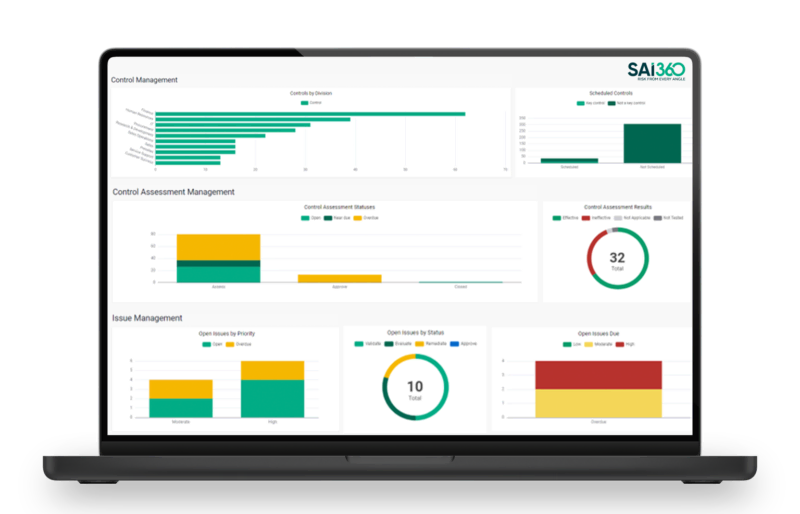COSO Principles
COSO Principles provide a standardized framework for designing, implementing, and evaluating internal controls to manage risk and ensure reliable financial reporting. Widely adopted under the Sarbanes-Oxley Act (SOX), the COSO Framework supports operational effectiveness, compliance, and transparent governance.

SAI360 enables organizations to embed COSO-aligned internal controls into their risk and compliance programs with agility and scalability. Our GRC platform helps map risks to control activities, automate testing and assessments, and provide continuous visibility into compliance posture.
Whether you’re aligning to SOX 404, strengthening operational risk management, or improving governance, SAI360 provides the structure to drive both assurance and accountability.
Modules That Power The Solution
FAQs
Let Us Help
SAI360 enables you to make agile decisions using up-to-the-minute dashboards for key metrics to:



